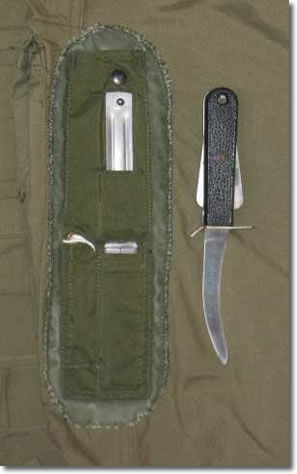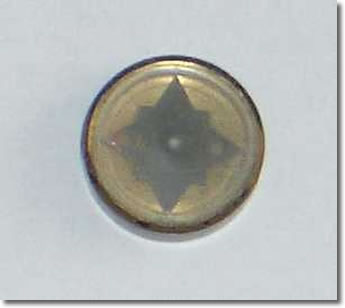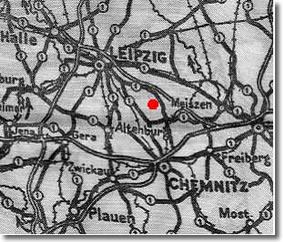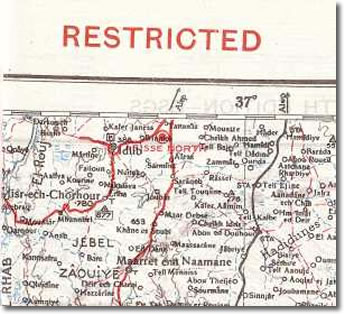RAF Survival Gear Bits
In this section, we will be concentrating on RAF survival gear of the 1940s and 1950s - later on it all became too efficient and boring. |
|
Type A Harness / Sutton HarnessThe first act of survival for the pilot is to prevent yourself falling out of the cockpit during aerobatics - or even ending up under the instrument panel after a forced landing. The Sutton Harness was used in RAF aircraft from the 1920s until the 1950s, when it was replaced by the Q harness. However, the Sutton Harness still equips many vintage aircraft. |
 |
A conical pin is pushed up through the holes of the thigh straps (on the left) and the shoulder straps (on the right) and is held in place by a safety pin. The fastening point should be just below the navel. On some aircraft, mainly fighters, the shoulder Y anchor strap was linked to a wire which could be slackened to permit the pilot to lean forwards. Tip: the broad body straps incorporate a thin sheet of spring steel, so if you ever have to cut your way out do not try to cut these - cut the anchor straps instead! (Not many people know that...) |
The Parachute
 |
Seat Parachute |
| For the last eighty years, the parachute has probably been the main means for aircrew to escape injury or death. The seat parachute shown above changed little from WWII into the 1960s. To avoid injury while baling out, the parachute had to be adjusted to the wearer; especially the leg loop, which if not adjusted properly could cause memorable damage to any male user... |
The Multiple Crew Dinghy
 |
|
Assuming the aircraft ditched okay, the next action would be to inflate the dinghy and get into it. Above is the large, round dinghy used by multiple crewed aircraft. |
|
 |
Single Crewman DinghyThe K Type dinghy was used in fighter aircraft or by observers in those RAF aircraft where the large multiple crew round dinghy was not practical. To get into it, the crewman would grip the handles at the narrower end and haul himself in - trying to get in over the side would simply capsize the dinghy. Many years ago, David Bruce boarded the single-man dinghy in record time after being thrown into a freezing cold training pool by some jovial blue-serge clad sadists. |
The RAF Emergency Release KnifeNo, this is not a piece of bling worn by Glasgow Neds at raves, it is an emergency release knife worn by aircrew of the RAF, RN, and army. It has been specially designed to cater for those minor life-threatening occasions like crashes and bale-outs. It is quite often carried by pilots of vintage aircraft as cockpits can change shape radically during a crash and strap releases might be inaccessible; just as that irritating dribble of fuel starts to run down your neck... Worn on the leg, often inverted on the calf or thigh, the release knife is freed from its scabbard by squeezing the metal tabs on either side of the handle. The cutting edge is actually on the inside of the curved blade, which makes it useless for knife-fighting; but very efficient at slicing through straps, hoses, electrical leads - and parachute cords should you end up dangling from a tree. Pointy things correspondent Mad Mal writes: |
|
 |
|
Wilkinson Survival Knife |
|
 |
"No - this is a knife..." Crocodile Dundee The Wilkinson was included in the survival packs of aircrew operating over the boonies and would be useful for building hides, making spears, chopping up jungle wildlife etc. The blade was Parkerised a dark green; sadly this sample has seen a bit of use and has been allowed to become a bit pitted. |
WWII RAF Aircrew Issue Pocket KnifeThis knife was a basic utility tool issued to RAF aircrew. The body is a simple folded steel U shape. This sample shows the knife blade on the right and the stones-out-of-horses-hooves thingy on the left. |
 |
 | Dinghy KnifeThe dinghy knife again features the cutting edge on the inside of the blade and is rivetted to a fat chunk of cork so that it floats. The blade is holed to make it lighter and the tip is round and blunt so you cannot stab the inflatable dinghy... :-) |
Miniature TelescopeMiniature telescopes were issued both to RAF aircrew and to the SOE. The RAF telescopes had a three tube construction and the SOE telescopes had two tubes. The sample shown here is the two-tube variant, which came in a small drawn aluminium container. The SOE also supplied a smoker's pipe with a fat stem that could conceal this item. The magnification is not great; only about 2.5, but that could make the difference between reading signs or not and for scouting terrain. |
 |
 | WWII Aircrew Escape CompassThe legendary escape compass issued to aircrew during WWII was six tenths of an inch in diameter and was often concealed in a uniform button with a screw top. The Germans eventually discovered this and tested every button worn by a new prisoner. So, the gadget men back in the UK simply reversed the screw thread and kept the compass hidden for another long period... North was pointed to by the red dot on the compass rose; just visible through the glass face of this sample. |
| Courtesy of the Fife Collection | |
Webley Service Revolver MkIV .380 inchPilots and certain other aircrew carried pistols when flying and the vast majority of these were .380 inch revolvers made by either Webley or Enfield. Early in the war, the pistol was a handy means of holing the fuel tank of an aircraft downed behind enemy lines; to make it easier to set light to - but that wheeze stopped after self-sealing tanks were fitted. |
 |
Some pilots did indeed tuck their revolver in their flying boot, but any pilot wanting their pistol to actually go bang usually carried it in the fluff-free zone of a canvas holster. The .380 pistol fired a jacketed bullet weighing 174 grains, and which had a muzzle velocity of 650 feet per second. This gave it a measly Muzzle Energy of 176 foot pounds. At the same time, US aircrew were carrying either the .38 Special revolver (ME 250) or the .45 Automatic Colt Pistol (ME 400). So, using the Webley to scare off civilians was acceptable; engaging German regular troops was a bit iffy... |
 | Wartime Silk Escape MapAllied aircrew were issued with escape maps of their theatre of operations, and this is an example of the one for Europe. Printed on silk, it measures about 18 x 14 inches, and shows towns, main roads, and railways. Escape maps were also smuggled to POW camps in a variety of normal objects; even inside gramaphone records, which meant that after the Germans discovered the ploy the POWs never got another intact record... |
Section of WWII Escape MapThis is a close-up of part of the map, about 2 inches square, to show the level of detail it offered. The red dot has been added to show the approximate location of Colditz Castle. |
 |
 | Post-war Escape MapThe fashion for silk maps for escape and evasion continued after the war. This is an example of one, dating from the early 1950s, for part of the middle east, and it measures about 29 x 24 inches. Post-war maps were coloured and of a very high quality compared with the WWII versions. |
Section of 1950s Silk MapThis is a close up of the 1950s map, about 3 inches square. Presumably the RESTRICTED level of security relates to the existence of the map rather than the content... |
 |
 | Ground/Air Emergency CodeDowned aircrew needed to have a means of communicating with any search aircraft that might fly overhead. The Ground/Air Emergency Code was developed in the 1940s and provided a means of giving information or making requests. |
© Copyright 2007 CairdPublications.com | Site Map | Contact Us |

